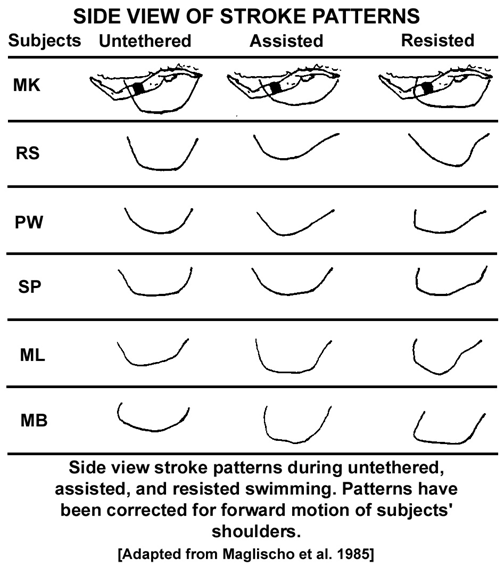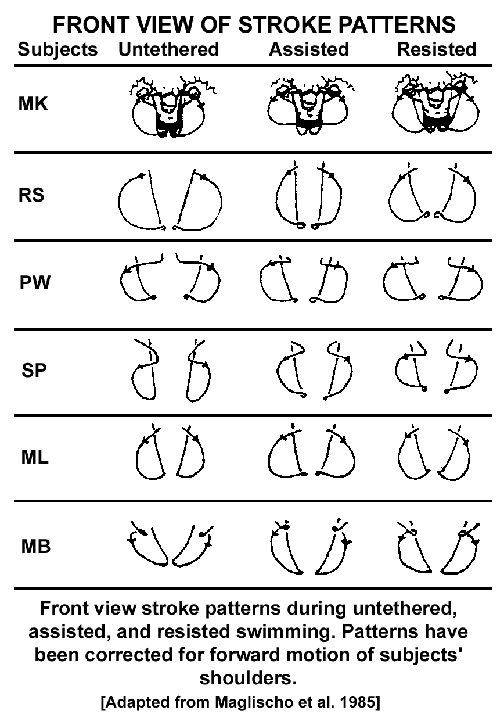
TETHERED SWIMMING TRAINS THE WRONG TECHNIQUES
Maglischo, E. W., Maglischo, C. W., Zier, D. J., & Santos, T. R. (1985). The effects of sprint-assisted and sprint-resisted swimming on stroke mechanics. Journal of Swimming Research, 1, 27-33.

Four male and two female age-group swimmers were filmed sprinting butterfly. They swam approximately 40 feet under three conditions: 1) normally, 2) partially tethered by a swim belt, and 3) sprint-assisted using a tethered belt. Biomechanical and stroking measures were evaluated.
It was contended by the authors that the changes promoted by these training methods might not be transferred if they only constituted a small part of the training program. They also suggested that there might be other, but not yet recognized, values to these forms of training.
Implication. It is recommended that these methods of training be treated cautiously and used sparingly. Their value might best be maximized early in basic training phases but could become counter-productive in more specific phases of training.
Adaptations of the illustrations from the article are shown below.


Return to Table of Contents for Training for Swimming.
